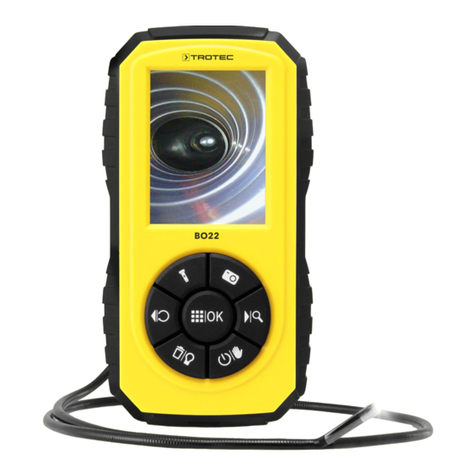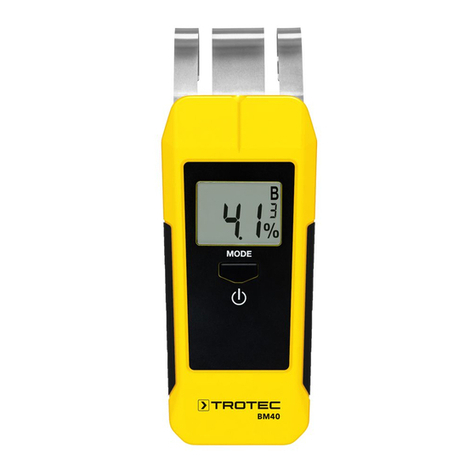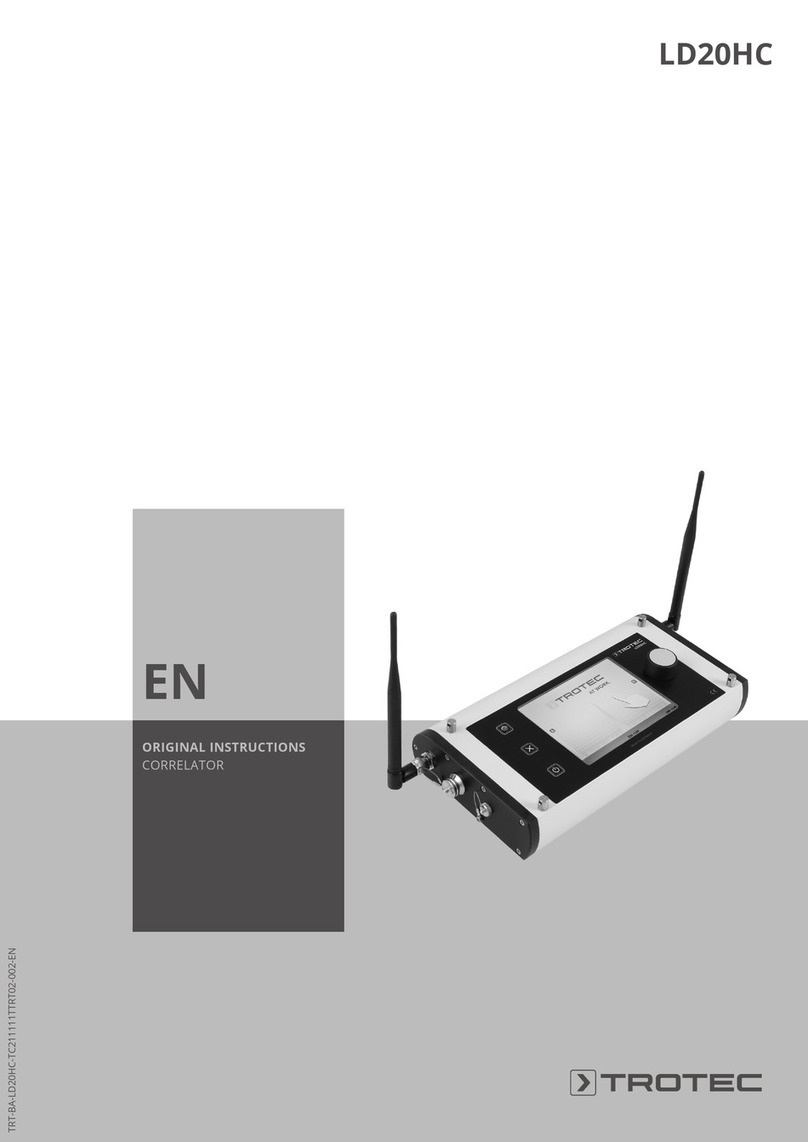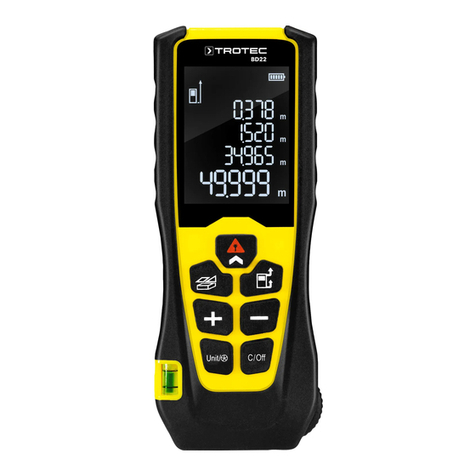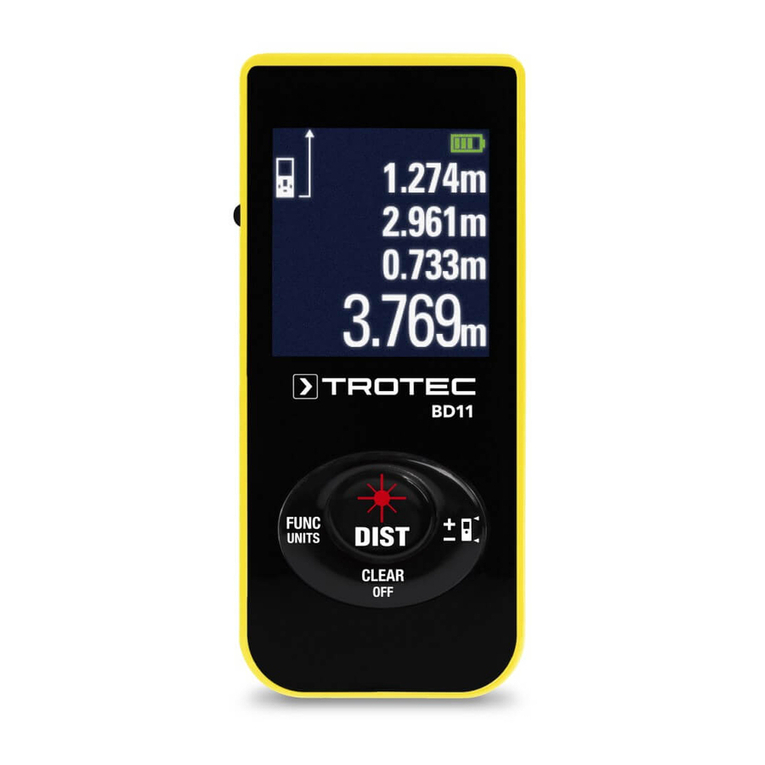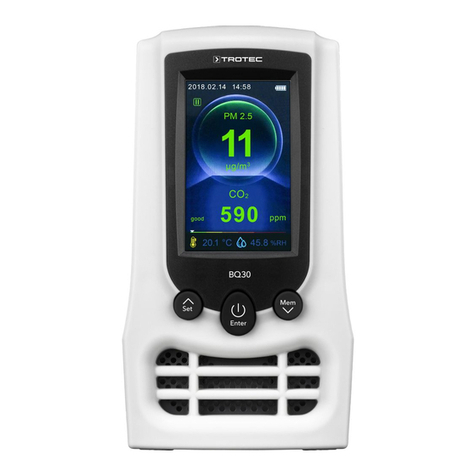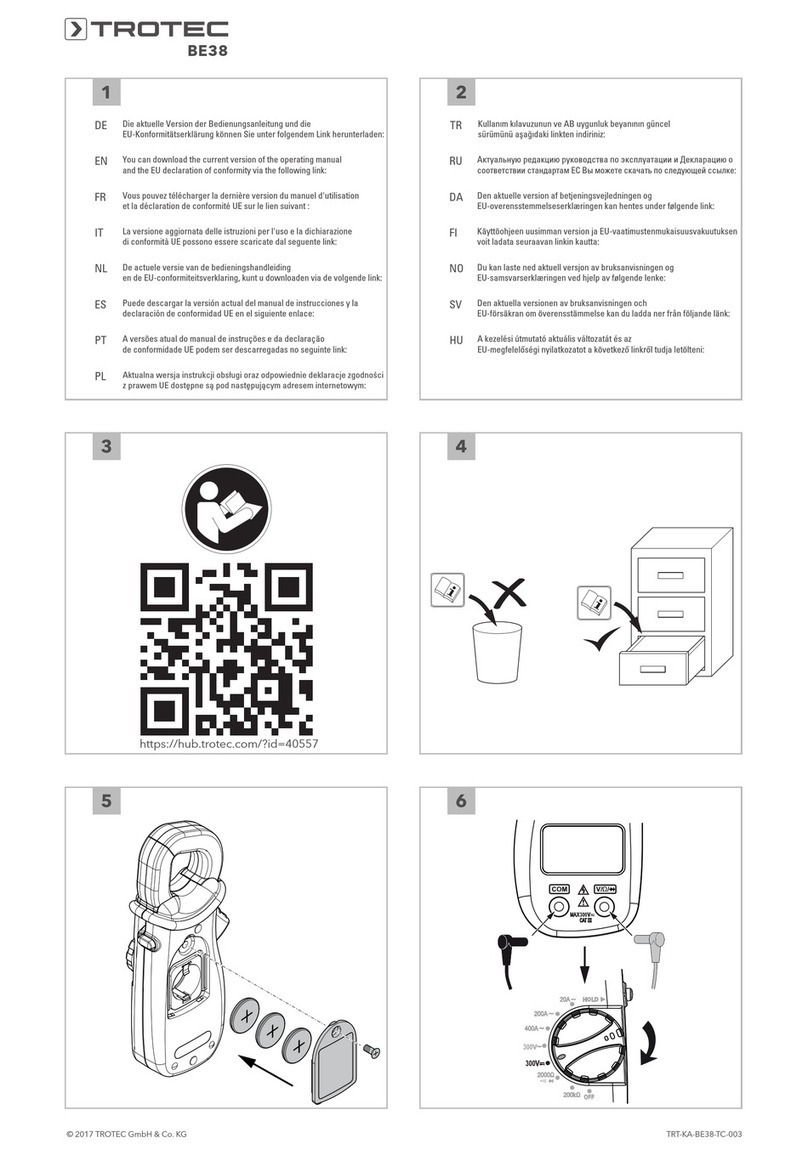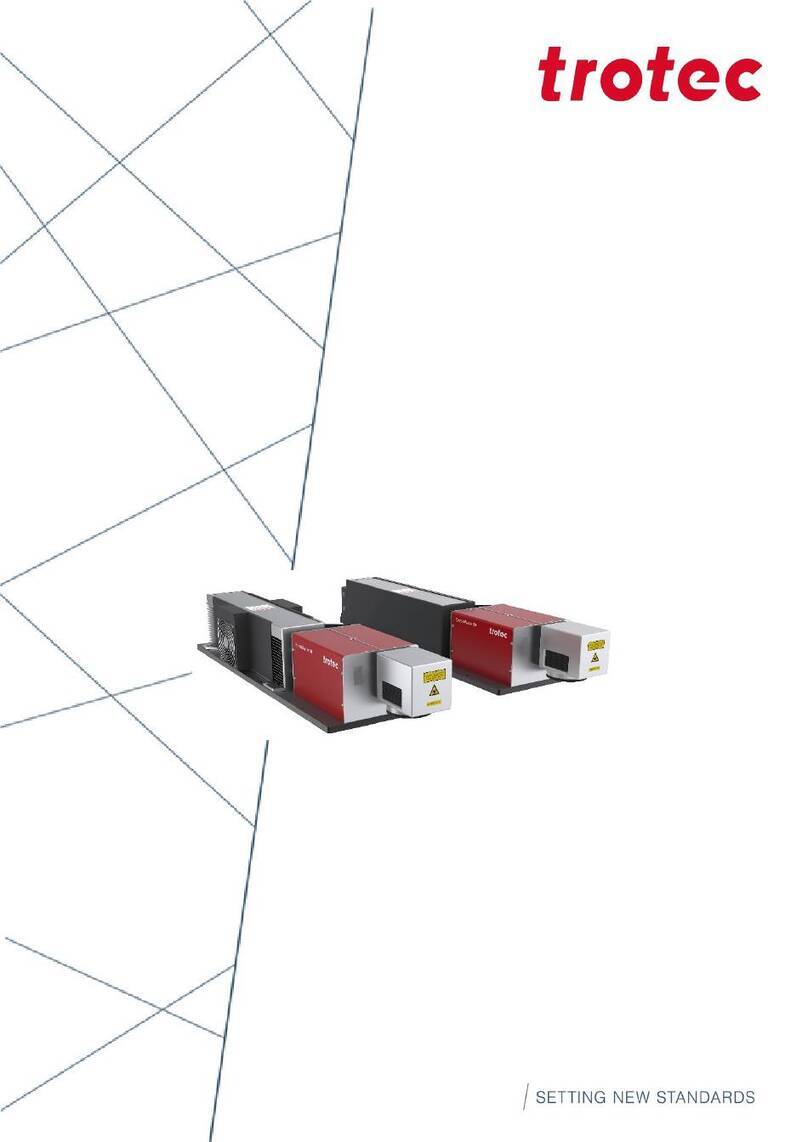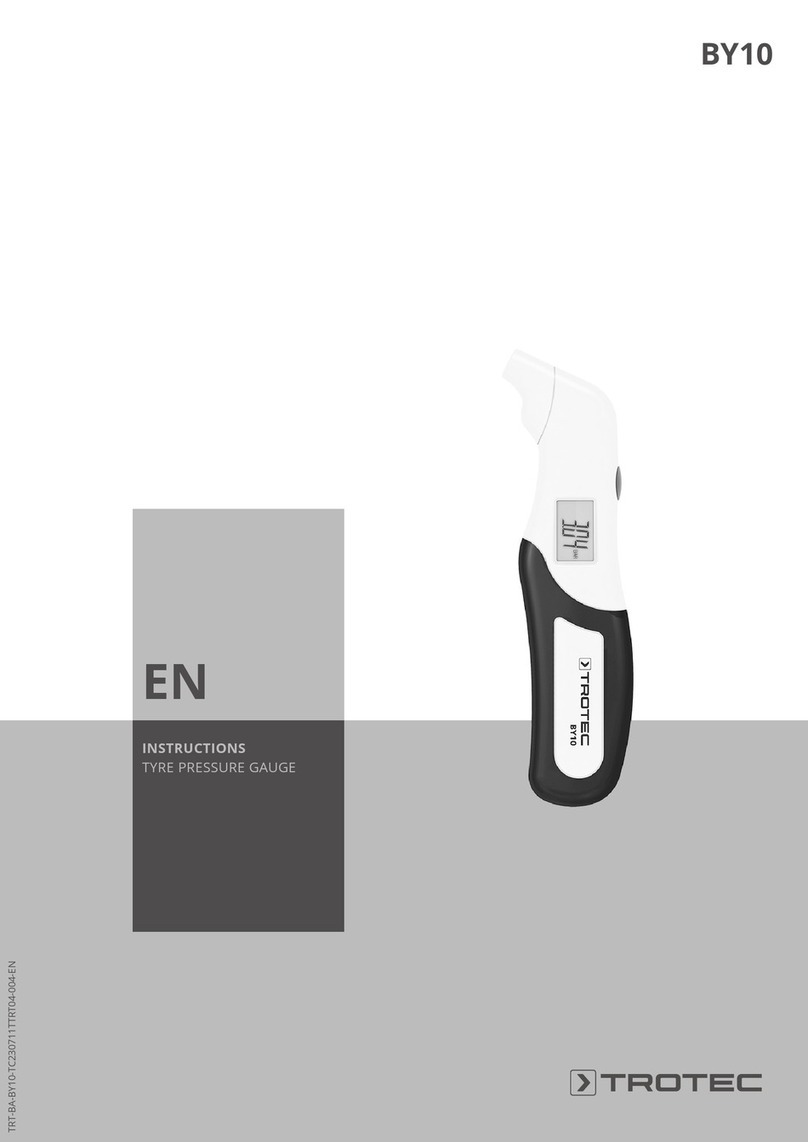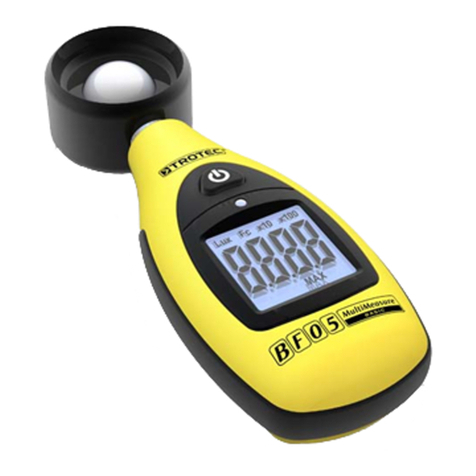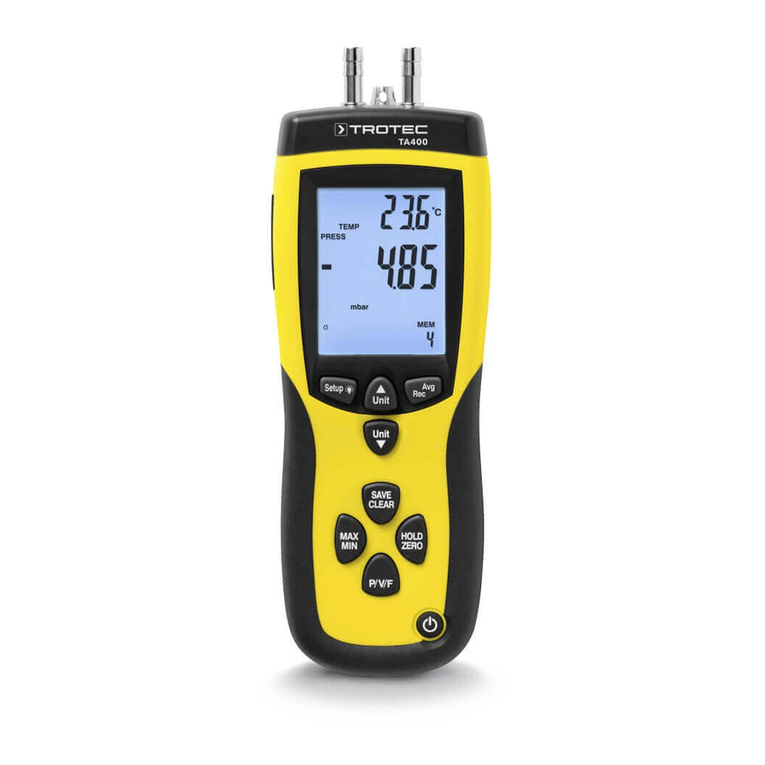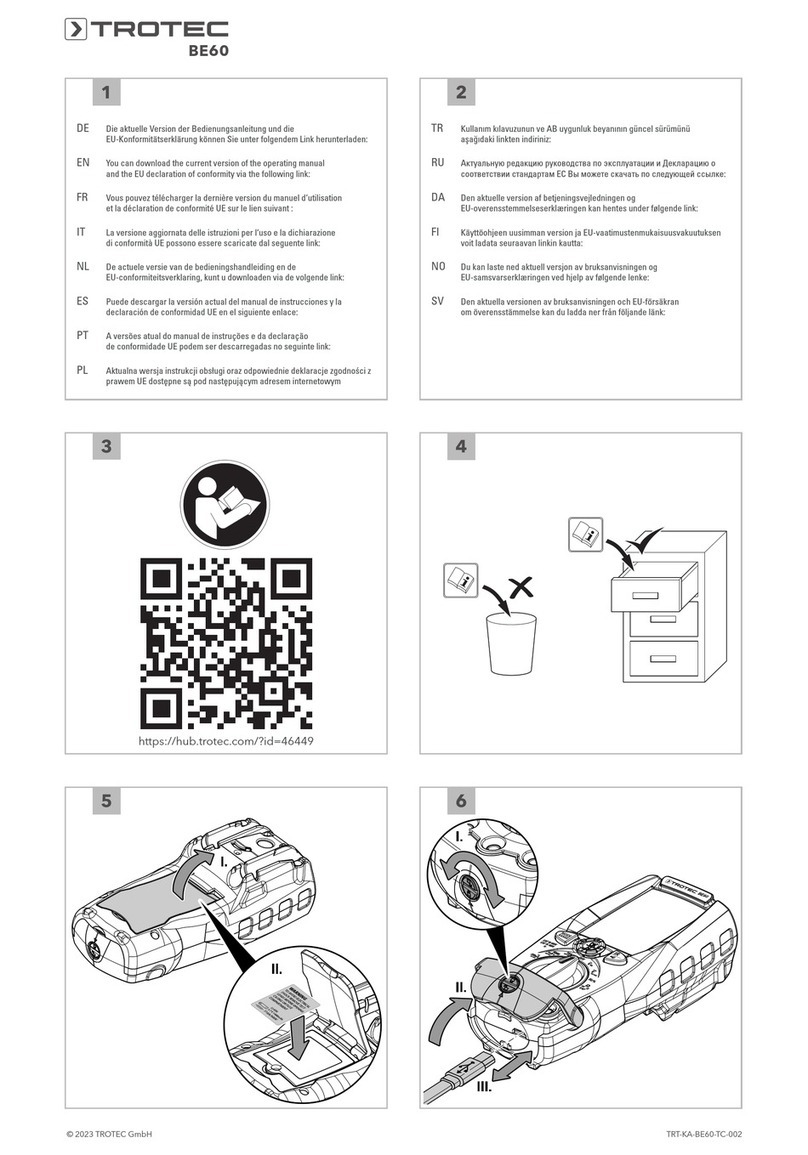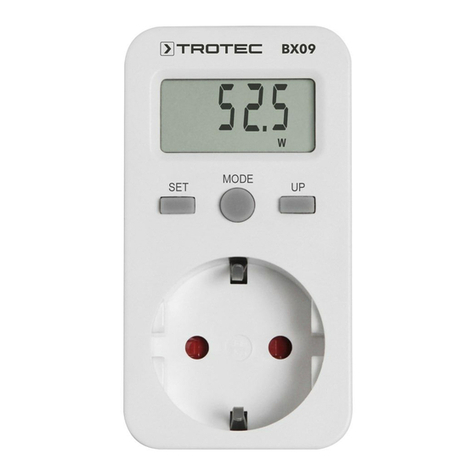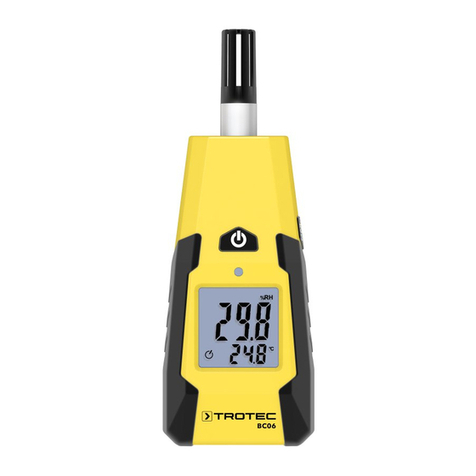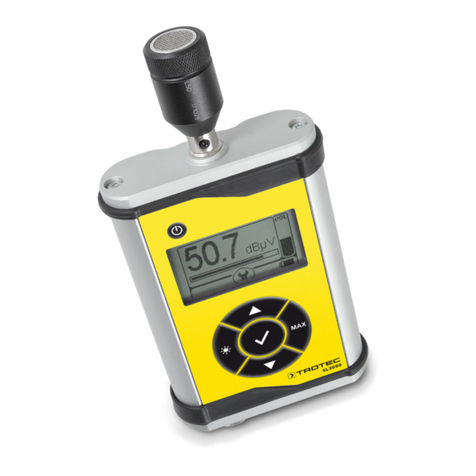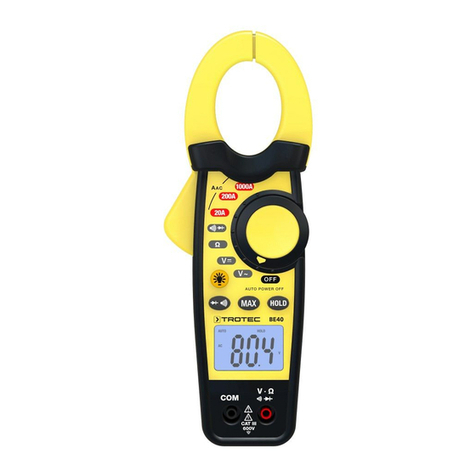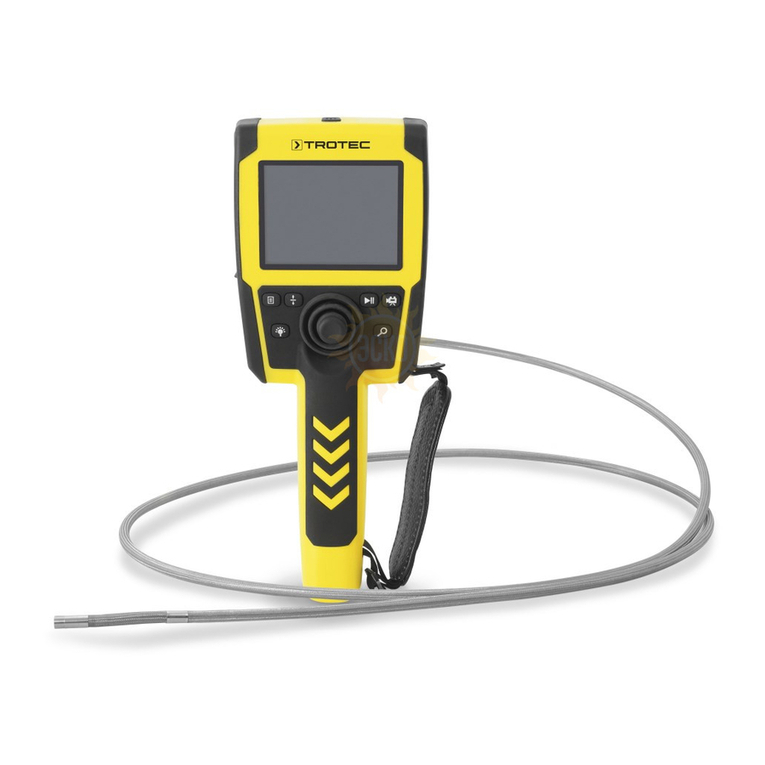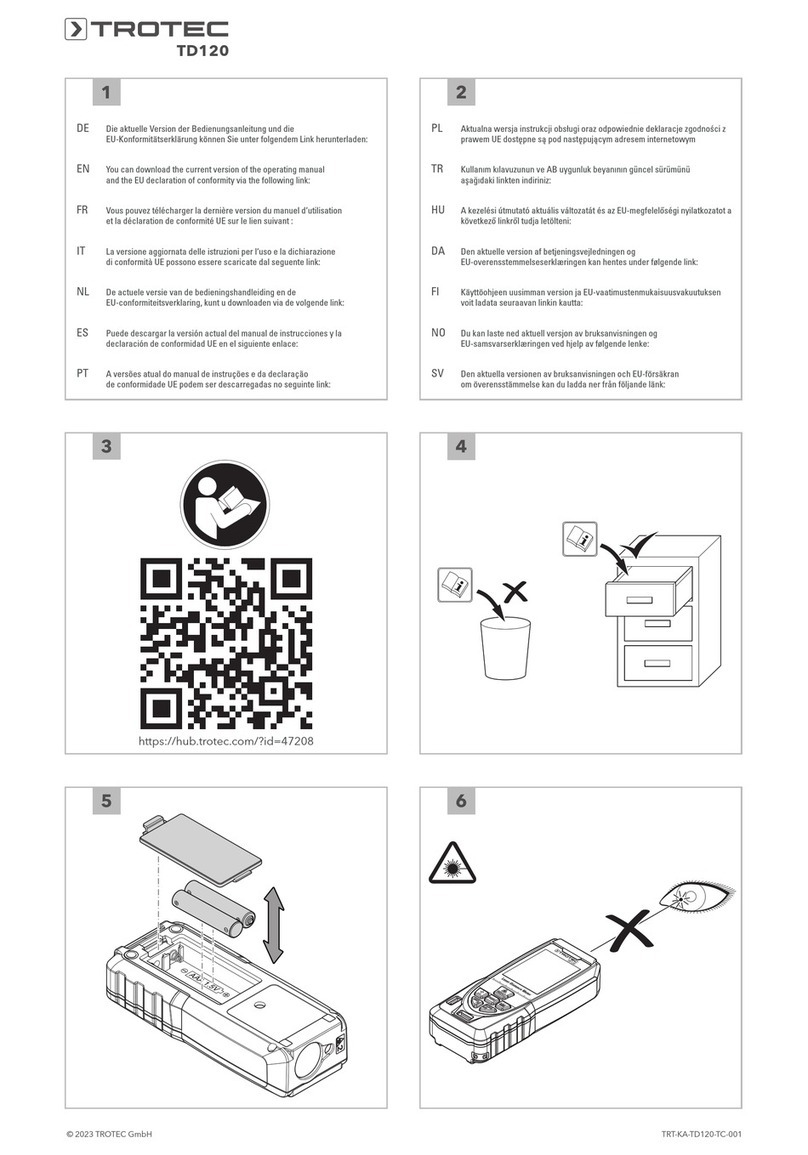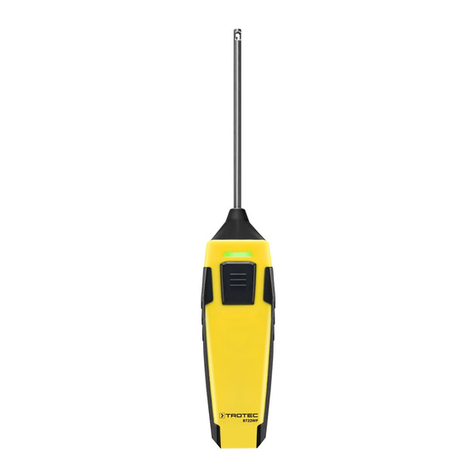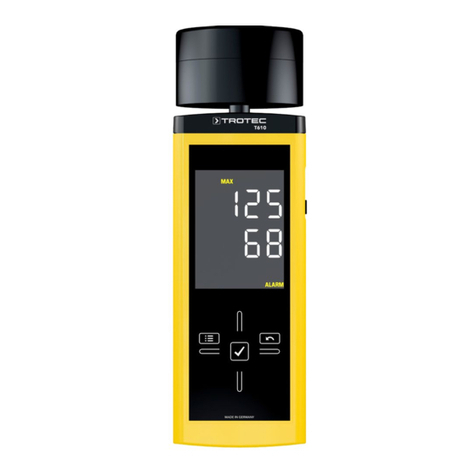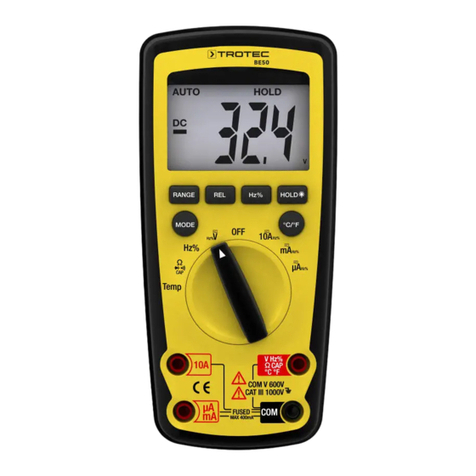
6 EN
layer thickness measuring device BB20
Setting the measuring mode
To adjust the measuring mode, please proceed as follows:
1. Press the Red button(9) to open the main menu.
2. In the menu, select the menu item Options and confirm by
pressing the Red(9) button.
3. Select the Measure mode menu item, then, select the
desired mode. Confirm with the Redbutton(9).
Single mode:
After every measurement, an acoustic signal will be emitted. All
measurements are automatically saved.
Continuous mode:
The sensor must not be lifted between the individual
measurements. No acoustic signal will be emitted after the
measurement. All measurements are automatically saved.
Setting the working mode
To set the working mode, please proceed as follows:
1. Press the Red button(9) to open the main menu.
2. In the menu, select the menu item Options and confirm by
pressing the Red(9) button.
3. Select the Working mode menu item, then, select the
desired mode. Confirm with the Redbutton(9).
The device offers two different working modes:
DIRECT:
This mode is suitable for quick and easy measurements.
Measurements are cached during a measurement series.
Once the device is switched off or changes into another working
mode, the measurement results will be deleted. The statistical
analysis programme is able to assess80measurements. Once
the memory is full, the oldest measurements will be overwritten.
GROUP:
The GROUP mode comprises group1to4. In each group,
80individual and 5statistical measurements can be saved.
Calibration and limit values can be adjusted and saved
individually.
Once the memory is full, current measurements will no longer
be saved. Measurements can be carried out as usual.
Setting the sensor mode
To adjust the sensor mode, please proceed as follows:
1. Press the Red button(9) to open the main menu.
2. In the menu, select the menu item Options and confirm by
pressing the Red(9) button.
3. Select the Used probe menu item, then, select the desired
mode. Confirm with the Redbutton(9).
•AUTO:
The sensor automatically selects a measuring mode.
•Fe:
The sensor operates according to the magnetic induction
principle if it is placed on a magnetic surface.
•Not Fe:
The sensor operates according to the turbulent flow
principle if it is placed on non-magnetic metals.
Units
You can choose between metric (μm and mm) and
imperial(mils) units.
If the measured value exceeds850μm, the device switches to
mm.
To change the unit, proceed as follows:
1. Press the Red button(9) to open the main menu.
2. In the menu, select the menu item Options and confirm by
pressing the Red(9) button.
3. Select the Unit setting menu item, then, select the desired
unit. Confirm with the Redbutton(9).
Reset
Resetting deletes the entire data in all memories. In order to
carry out a reset, follow these steps:
1. Switch the device off.
2. Simultaneously press the Zero button(4) and the Power
button(7).
ðsure to reset will be displayed.
3. Press the Red button(9) to confirm or the Blue button(2) to
cancel the process.
The device automatically switches back on.
Background illumination
In the menu, you can control the background illumination using
Options and Backlight, during a measurement, use the
Bluebutton(2).
